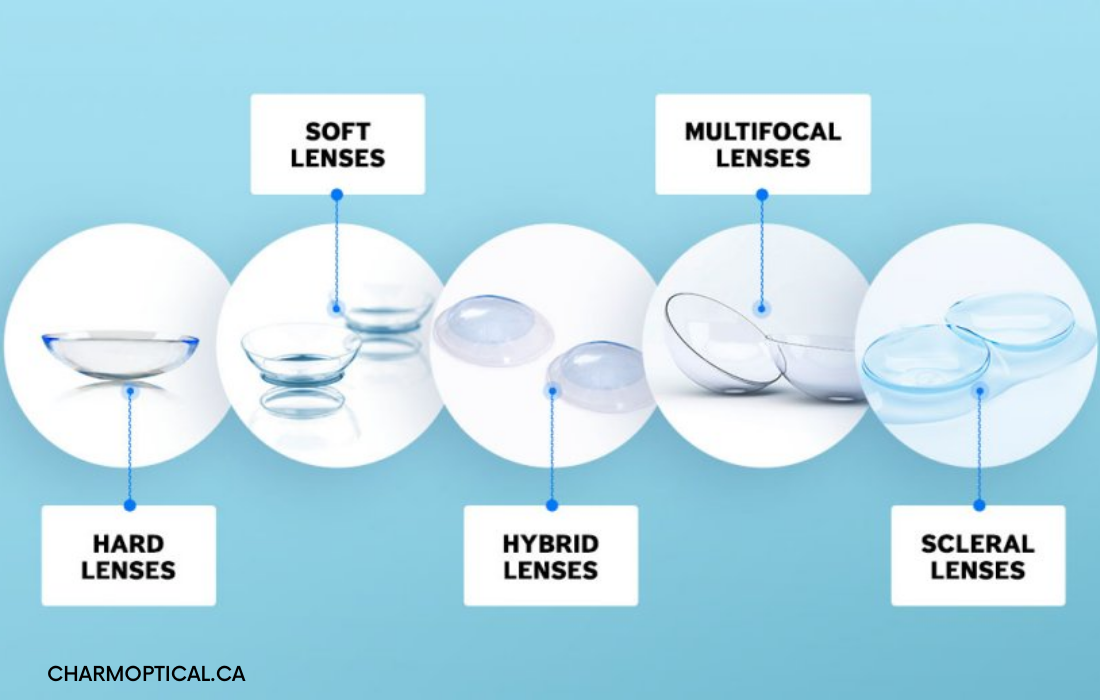Book Your Eye
Exam Now
Easier than ever, you can book your eye exam online here. Easy peasy lemon squeezy
Book an Eye Exam Now
Jannifer Smith, Feb 21, 22

Everyone needs a break from eyeglasses, and you might want to try a new look now. Contact lenses are the best alternative to replace eyeglasses; it is better than trying another pair of eyeglasses.
Before buying contacts, you need to know all basics of it as you cannot just go and purchase it. Many things matter and each lens is made of different materials that might or might not be suitable for your eyes. In addition, it contains additional features, designs and sometimes, the lens can have a new format.
So it’s better to do some research on it before spending your money or getting any eye infection while trying them. So here we have everything that you need to know about contact lenses.
Based on material contacts are divided into these main types
Many different brands are providing it due to the comfort and easiness of putting it into the eye when it comes to soft lenses. A soft lens is made up of hydrogels that are a mixture of gel-like plastic, which remains moisture all the time.
They are introduced in the 1970s and are highly adaptive due to their pliable and thin surface, which adjust easily on the eye surface.
Here are some pros and cons of soft lenses.
They fit into the eye without any inconvenience
However, some cons make it not work for everyone
Hard lenses are made more custom. So they are made and tailored specifically for your eyes according to prescription and the shape of your eyes. They are made up of polymethyl methacrylate and are made to be fit not to move around so much because they are complex and can damage your eyesight. They are very rarely prescribed these days because they do not allow oxygen to transfer from them, and that's why they are sometimes inconvenient for the eyes.
Many patients say that they see 20/20 because of the optical quality of plastic from which these lenses are made out. These lenses create a tear prism behind the lens; they enhance and give you an even sharper image and quality
Nowadays, myopia or nearsightedness is a common issue globally. As a result, lenses have largely replaced eyeglasses. Silicone hydrogel lenses are specially made to deal with problems that usually affect contact wearers.
Often contact lenses become uncomfortable to wear for long periods like hypoxia- the lack of oxygen to the cornea and silicone hydrogel lenses prevent it and deal with this problem.
According to most of the patients, with it all day, your eyes feel healthy because their cornea can absorb oxygen from their environment.
It combines a rigid gas permeable lens with an outer skirt made of the soft material of a contact lens. A hybrid lens provides the vision of a GP lens alongside the comfort of a soft lens. In this way, you get the best of both worlds in one.
Design parameters and classification of RGP lenses are unique; over the last decade, the material of this lens has become thinner and thinner to fit in the eye correctly. In addition, the rigid shape of gas permeable lenses increases the quality of vision, and some RGP lenses are designed to cover just the cornea.
Silicon is used in these lenses, and it is made for those who have unique prescriptions or the shape of their cornea is irregular. It is because the weight of the lens is different on different parts of the eye depending on the cornea, and that's why they fit in the eye very precisely.
The main difference between hard lenses and RGP lenses is that they allow oxygen to pass through them, and hard lenses prevent oxygen from entering the eye.
These are the main types of lenses, and we have given the pros and cons of each class so that it might become easy for you to conclude. If you are still confused, you can contact your doctor to discuss which option is better for but you can get an idea of how many types are there and which type is looking suitable.